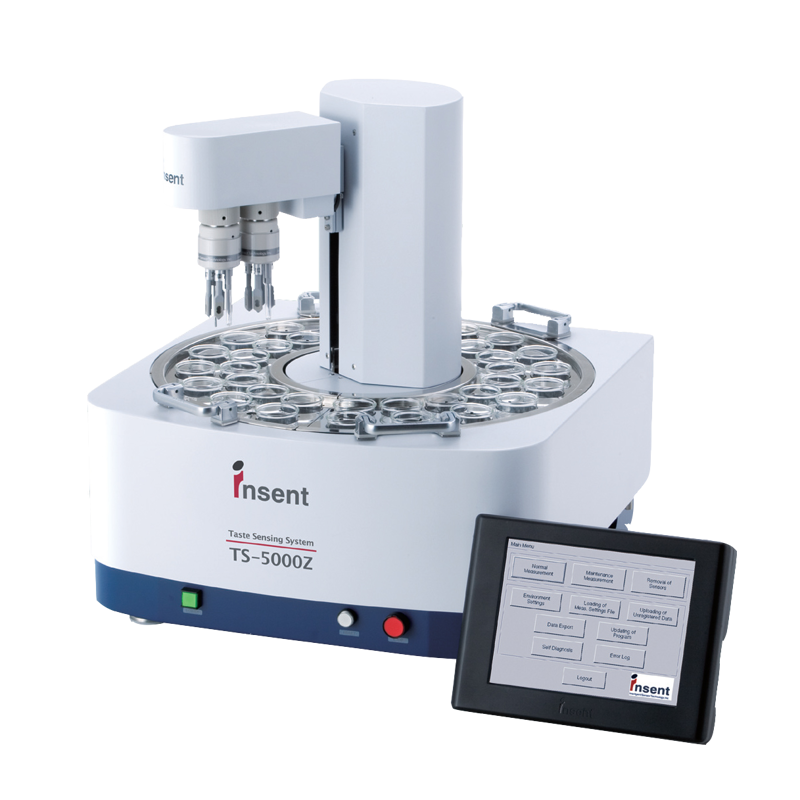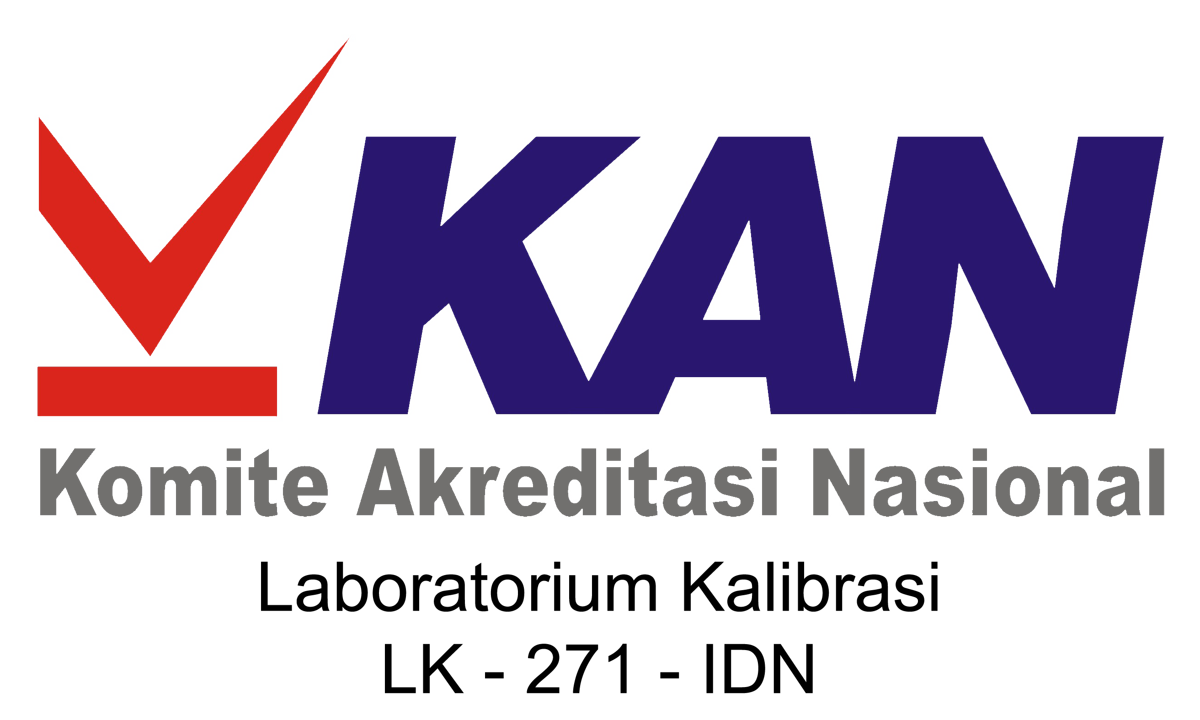INTELLIGENT SENSOR TECHNOLOGY
At Anritsu Corporation, we first started carrying out research on taste sensors in cooperation with Prof. Toko of Kyushu University in 1989, and we succeeded in developing the world’s first taste sensing system in 1993. In 2002, we established a new company, Intelligent Sensor Technology, Inc (INSENT) as a spin-off from Anritsu Corporation. Through our products, we provide innovative solutions to solve the problems of our customers. It was previously thought that taste was subjective and therefore could not be measured and evaluated objectively. However, with our unparalleled technology, objective taste evaluation is now possible.
Through our taste sensor business, we will continue contributing to food culture by providing “the measure of taste” to international standards for people worldwide.Hidekazu Ikezaki
President, Intelligent Sensor Technology, Inc.
Taste Sensors Model Taste Reception Taste Sensors Model Taste Reception Mechanisms of Living Organisms
The surface of the tongue of living organisms is formed
of a lipid bilayer with its own specific electric potential. This
electric potential varies according to the electrostatic
interaction or hydrophobic interaction between various taste
substances and the lipid. The amount of change is perceived
by the human brain as taste information, an activity referred
to as taste judgment.
Our taste sensors imitate this taste reception mechanism of
living organisms. Our taste sensors consist of an artificial
lipid membrane (similar to that of the human tongue) that
causes electrostatic or hydrophobic interactions with various
taste substances, allowing them to sense “taste.”
The taste sensors evaluate two types of taste, namely initial
taste, which is the taste perceived when food first enters
the mouth, and aftertaste, which is the persistent taste that
remains in the mouth after the food has been swallowed.
Using the potential of a reference solution* as zero, the
difference in potential with the sample liquid is measured
as the initial taste. The sensors are then lightly washed
and the difference in potential with the reference solution
is measured as the aftertaste.
TS-5000Z

The Taste Sensing System TS-5000Z, which employs the same mechanism as that of the human tongue, converts the taste of various substances such as food and drugs into numerical data. Using unique aftertaste measurement technology, even aspects such as “richness” and “sharpness,” which could not be measured by conventional chemical instruments, can be expressed. Moreover, the proprietary analysis application makes obtaining analysis results easy. As a support tool for sensory evaluation, the TS-5000Z is a powerful tool for use in a variety of fields such as quality control, product development, marketing, and sales, where objective evaluation of taste is required.
List of Papers
Relationship between the Amount of Bitter Substances Adsorbed onto Lipid/Polymer Membrane and the Electric Response of Taste Sensors  Kiyoshi Toko, Daichi Hara, Yusuke Tahara, Masato Yasuura, Hidekazu Ikezaki Sensors, 14(9), 16274-16286, 2014
Kiyoshi Toko, Daichi Hara, Yusuke Tahara, Masato Yasuura, Hidekazu Ikezaki Sensors, 14(9), 16274-16286, 2014
Website >
Development of Sweetness Sensor with Selectivity to Negatively Charged High-Potency Sweeteners  Masato Yasuura, Hirotaka Okazaki, Yusuke Tahara, Hidekazu Ikezaki, Kiyoshi Toko Sensors and Actuators B, 201, 329-335, 2014
Masato Yasuura, Hirotaka Okazaki, Yusuke Tahara, Hidekazu Ikezaki, Kiyoshi Toko Sensors and Actuators B, 201, 329-335, 2014
Website >
Development of a Sweetness Sensor for Aspartame, a Positively Charged High-Potency Sweetener  Masato Yasuura, Yusuke Tahara, Hidekazu Ikezaki, Kiyoshi TokoSensors, 14(4), 7359-7373, 2014
Masato Yasuura, Yusuke Tahara, Hidekazu Ikezaki, Kiyoshi TokoSensors, 14(4), 7359-7373, 2014
Website >
Read more Papers :
Response Principle
A taste sensor is required to exhibit global selectivity so that it responds consistently to the same taste similarly to the human tongue. After years of research with Prof. Toko's group at Kyushu University, Japan, we have successfully developed taste sensors based on an artificial lipid membrane that consistently responds to similar taste. Figure 1 shows the response principle of taste sensors.

The lipid in the taste sensor interacts with various taste materials via electrostatic and hydrophobic interactions, which causes a change in potential of the lipid membrane. The change is detected by a computer to provide a sensor output.
Measurement Procedure

Process 1: First, the taste sensor is immersed in a reference solution of 30 mM KCl and 0.3 mM tartaric acid to obtain the membrane potential, Vr. The reference solution has almost no taste and is used in this system as an alternative to human saliva.
Taste Sensors and Taste Information
Technologically advanced taste sensors equipped with the TS-5000Z taste sensing system exhibit the specialized feature of global selectivity, providing meaningful results with high correlation to sensory scores. This system also enables the comprehensive and objective taste evaluation of foods, beverages and pharmaceuticals with high accuracy and reliability, and can be used in a wide range of fields, including R&D, marketing, quality control and quality assurance.
The TS-5000Z was developed in 2006 under the financial support program, Risk-taking Funds for Technology Development, of Japan Science and Technology Agency (JST).![]() JST's Website (PDF: 8.24MB) >
JST's Website (PDF: 8.24MB) >
For more details, see the online brochure for the TS-5000Z ( ![]() PDF: 3.79MB).
PDF: 3.79MB).
Each taste sensor developed by our specific and innovative technologies has global selectivity to a taste quality, so sensor outputs can be converted to taste information that helps distinguish differences in both taste quality and intensity between samples. Table 1 shows the list of taste sensors and the related taste information.
| Taste information | Sensor | Characteristic | Targets | |
| Initial taste (Relative value) | Sourness | CA0 | sourness produced by citric acid and tartaric acid | beer, coffee |
| Saltiness | CT0 | saltiness evoked by dietary salts | soy sauce, soup, stock sauce | |
| Umami | AAE | umami (savoriness) by amino acids and nucleic acids | soup, stock sauce, meat | |
| Acidic bitterness | C00 | bitterness derived by bitter substances found in foodstuffs and beverages, but can also be perceived richness with its concentration being low | bean curd, stock sauce, soup | |
| Astringency | AE1 | pungent taste by astringent taste materials | wine, tea | |
| Sweetness | GL1 | sweetness produced by sugars and sugar alcohols | sweets, drink | |
| Aftertaste (CPA value) | Aftertaste from acidic bitterness | C00 | aftertaste by bitter taste materials | beer, coffee |
| Aftertaste from astringency | AE1 | aftertaste by astringent taste materials | wine, tea | |
| Richness | AAE | richness, also called “continuity,” evoked by umami substances | soup, stock sauce, meat | |
| Aftertaste from basic bitterness | AC0 AN0 | bitterness of medicines | basic drugs (such as quinine hydrochloride, famotidine) | |
| Aftertaste from hydrochloride salts | BT0 | bitterness of medicines | hydrochloride drugs | |
Company History
| January 30, 2002 | Intelligent Sensor Technology, Inc., also referred to as "INSENT", is registered in Atsugi-shi, Kanagawa, Japan. |
| April 1, 2002 | Following the transfer of the taste sensor business from Anritsu Corporation, INSENT launches itself as a business focusing on the development of taste sensors and the provision of related services. |
| July 16, 2002 | INSENT's capital reaches 52.5 million yen. |
| October 26, 2002 | INSENT's capital reaches 55 million yen. |
| November 19, 2002 | INSENT receives an award at the Kanagawa Business Audition. |
| October 2003 | INSENT receives support as part of a Venture Supportware project from the Venture Enterprise Center. |
| December 30, 2003 | INSENT's capital reaches 91 million yen. |
| April 2004 | INSENT is recognized as an Innovative Small and Medium Enterprise by Kanagawa Prefectural Government. |
| September 2004 | INSENT Corporation establishes a new company, Taste & Aroma Strategic Research Institute Co. Ltd., providing marketing, consulting and content-based services based on the digitalized taste measurement of foodstuffs to provide clear and straightforward taste information to customers. |
| November 2005 | INSENT receives an incentive award from Kanagawa Prefectural Government at the 22nd Kanagawa High-Tech Grandprix. |
| December 31, 2006 | INSENT's capital reaches 95 million yen. |
| April 2007 | Under the financial support program “Risk-taking Funds for Technology Development,” Japan Science and Technology Agency recognizes the successful development of the TS-5000Z taste sensing system. → PDF (8.04MB) on Website |
| July 2007 | INSENT starts selling the TS-5000Z Taste Sensing System (Japanese language version) to the Japanese market. |
| February 2008 | INSENT is recognized by Kanagawa Prefectural Government as a "Kanagawa Standard" for its high-tech taste sensing technology and business plan. |
| March 2008 | Together with Prof. Toko, INSENT receives an award from the Resona Foundation for Small and Medium Enterprise Promotion at the 20th Awards for New Technology and New Products of Small and Medium Enterprises. |
| February 2009 | The successful development of the sweetness sensor by INSENT is recognized by Mitsubishi-UFJ Technology Development Foundation of Japan, who provided financial support. |
| March 2009 | INSENT receives 4 awards from the Institute of Industrial Promotion, Kawasaki, at the 58th Kawasaki Entrepreneur Audition Business and Idea Seed Market. |
| April 2009 | INSENT is selected as one of 300 small and medium enterprises that are supporting innovation in Japan by the Small and Medium Enterprise Agency of Japan. |
| June 2009 | INSENT launches the TS-5000Z Taste Sensing System (English language version) for the global market. |
| July 2009 | Together with Prof. Toko, INSENT receives the 34th Inoue Harushige Award from Japan Science and Technology Agency. |
| July 2009 | INSENT receives the 3rd Monodzukuri Nippon Grand Award Special Prize from the Ministry of Economy, Trade and Industry of Japan. |
| December 2010 | INSENT's capital reaches 125 million yen. |
| April 2011 | Prof. Toko and INSENT receive a technical award from the Iijima Memorial Foundation for the Promotion of Food Science and Technology. |


